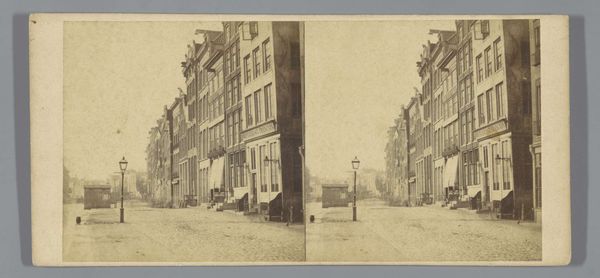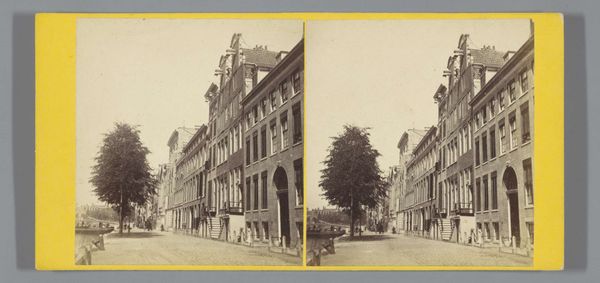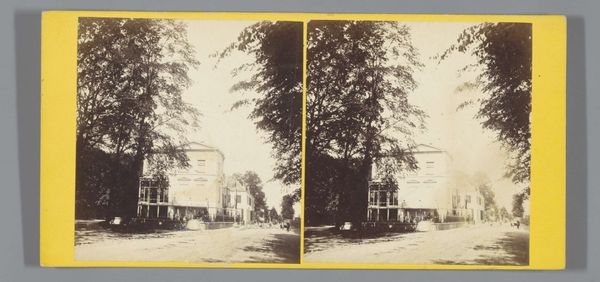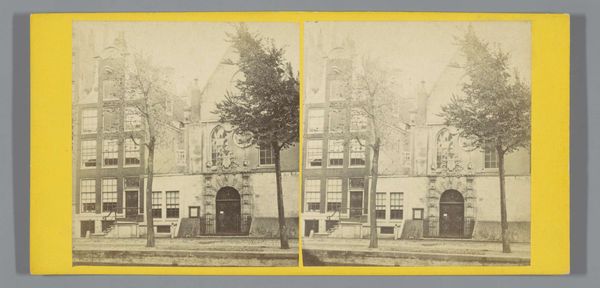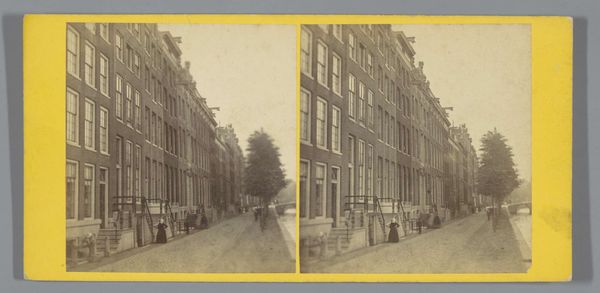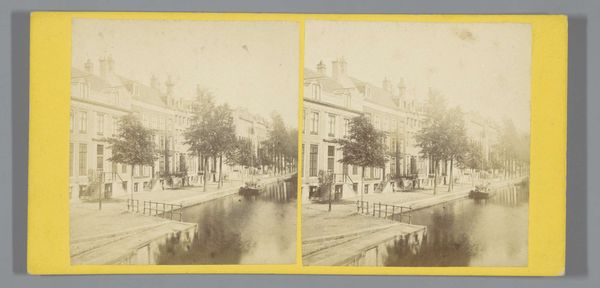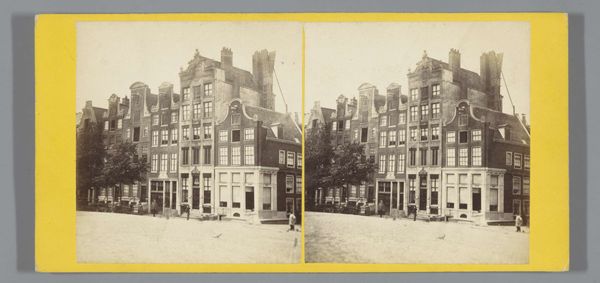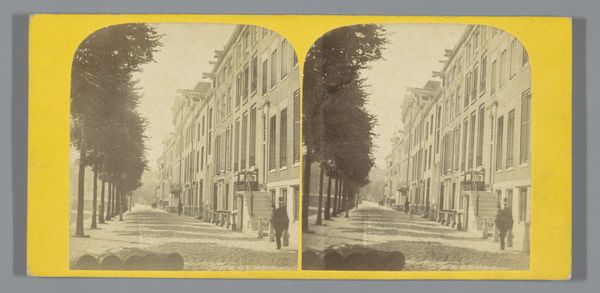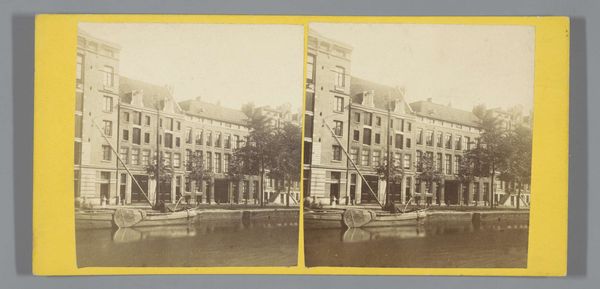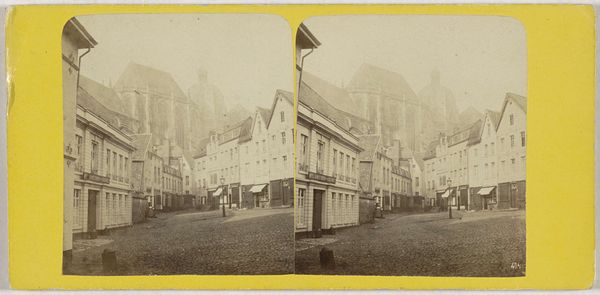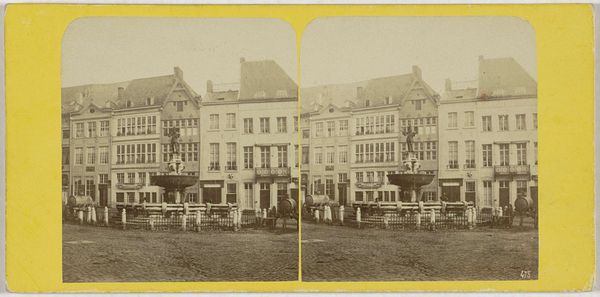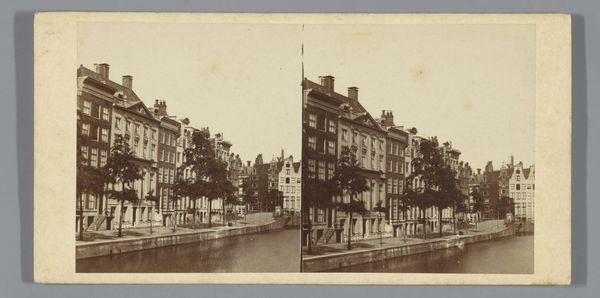
Gezicht op de Herengracht bij de Huidenstraat in Amsterdam 1860 - 1885
0:00
0:00
Dimensions: height 83 mm, width 170 mm
Copyright: Rijks Museum: Open Domain
Curator: This gelatin silver print, taken en plein-air between 1860 and 1885, offers us a "View of the Herengracht at Huidenstraat in Amsterdam" by Pieter Oosterhuis. Editor: It's remarkably tranquil. The mirrored effect of the stereograph creates a kind of uncanny, dreamlike stillness along the canal. The light is so soft. Curator: Indeed. Oosterhuis captured Amsterdam during a period of significant urban and economic development. Photography offered a new way to document the changing cityscape. Editor: This serene image is interesting juxtaposed with the historical realities of the time. While the photograph showcases this quiet, affluent area, it simultaneously omits other stories like those of laborers who lived in completely different districts. Curator: That's right, and the technique is significant. This is a stereograph. Viewed through a stereoscope, it would give the viewer a sense of depth, further enhancing the realism of the scene, bringing Amsterdam to life. It’s not just a visual record but almost a tactile experience. Editor: I wonder about that "realism." While this photograph presents a meticulously composed scene, these canals would have been very smelly. I think we should question whose experiences and perspectives are being prioritised within these images and narratives. Curator: Well, certainly photographs like these helped to solidify Amsterdam’s image as a prominent and sophisticated urban center, feeding into broader cultural narratives about the city's place in the world. The meticulous facades of those canal houses contribute to the sense of order and prosperity. Editor: But that "order and prosperity" was at the cost of social inequity and undercurrents. These pretty photographs mask complicated systems of power and class. Curator: That's why viewing art from the past requires a critical lens to appreciate how intertwined they are with the culture that produced them. Thanks for making this nuanced. Editor: Always good to reflect on what's both seen and unseen in the past to better navigate our present!
Comments
No comments
Be the first to comment and join the conversation on the ultimate creative platform.

